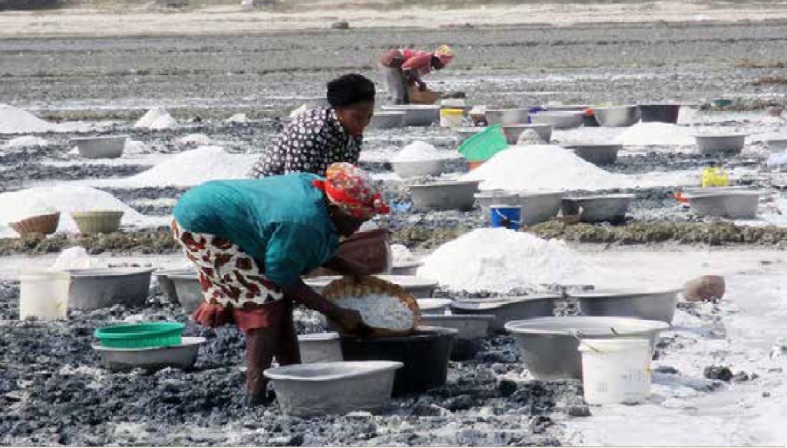
“ In many countries, the most vulnerable and marginalized groups, whose tenure rights are most at risk, are also the most socially and politically disempowered, and common targets of criminalization, harassment and intimidation by state and non-state actors.”
Women’s economic empowerment is essential to ensuring that the benefits of the mining and minerals sector are shared widely by society. A growing number of major mining companies now recognize the urgent need to invest in women, and they see the opportunities these investments will generate for their business. Many companies are including a gender perspective in their operations, throughout project life cycles, and across their value chains. Yet there remain significant shortfalls in the ambition, implementation, and cross-sector collaboration required to create change for women involved with and affected by mining operations in Sub-Saharan Africa.
To better understand the daily life of populations that depends entirely on the land and its natural resources to survive, I visited Keta Legon last month, August 2019 in purpose to analyses differents aspects related to land governance, gender, livelihood, conflits of small scale mining and the large invest etc. Keta Lagoon, also called Anlo-Keta lagoon, is the largest of the over 90 lagoons that cover the 550 km stretch of the coastline of Ghana. This lagoon is 126.13 km in length. It is located in the eastern coast of Ghana and separated from the Gulf of Guinea by a narrow strip of sandbar. This open salty water is surrounded by flood plains and mangrove swamps. Together they form the Keta Lagoon Ramsar site which covers 1200 km2.
Land and Natural resources use and Livelihood effects

Salt production in Ghana started in the 19th century and, aside from fishing, it is the major economic activity of people along its 500km coastline. The salt producing areas in Ghana include the Keta lagoon, the Songhor lagoon, the Densu Delta area, Nyanya lagoon, Oyibi lagoon, Amisa lagoon, Benyah lagoon.
The Keta lagoon supports different forms of life and therefore constitutes an important source of livelihood for the people who live in its catchment areas and beyond the region. The main economic activities supported by the lagoon are farming, fishing and salt mining. Besides fishing and farming, the lagoon supports salt mining and wining activities, particulary during the dry season when the volume of water in the lagoon reduces or dries up. Around the lagoon, seven communities are organized for the exploitation of salt and other resources. These communities are: (1) Dogbekope, (2) Afiadenyigba, (3) Tsavanya, (5) Tack-corner, (6)Sonto, (7) Kpedzakope. Further artisanal and small-sacale salt production activities generate a lot of menial jobs that are easily accessible to people within the communities especially women. These job including carting salt from crystallization pans to various store rooms, iodizing the salt, putting them in branded sacs and sewing them. In all these activities, women play a leading role. Another dimension of the greater involvement of women in the salt industry is trade in the commodity locally and internationally. There is a sizeable number of female traders who buy and aggregate salt for sale in the middle and northern parts of Ghana. According to Mrs Aminononvi, a woman in salt minning activity and native of Keta lagoon: « Before the expropriation of this community resource, salt mining in a single dry season generated a lot of income, allowing us to support our family and especially to pay school fees for our children ». Unfortunately with the expropriation of the lagoon by Ghana government and landing of foreign companies, incomes have declined significantly. The subsistence of the communities have been greatly compromised. It is difficult for children to attend school. The Ghanaian government must integrate the indigenous population into the transparent management of the lagoon. It should give some actions to the local community as compensation of their ressources Expropriated.






